
PhoGPT
PhoGPT: Generative Pre-training for Vietnamese (2023)
Stars: 739
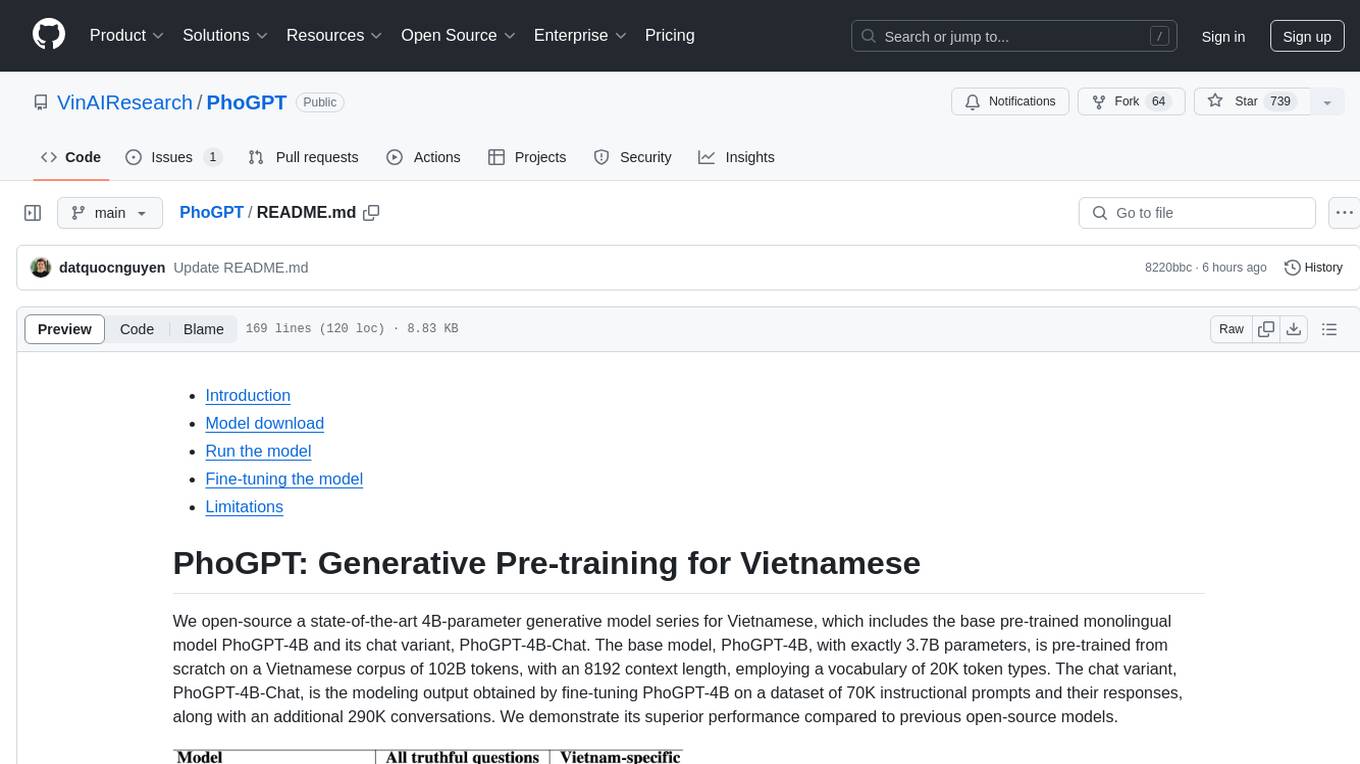
PhoGPT is an open-source 4B-parameter generative model series for Vietnamese, including the base pre-trained monolingual model PhoGPT-4B and its chat variant, PhoGPT-4B-Chat. PhoGPT-4B is pre-trained from scratch on a Vietnamese corpus of 102B tokens, with an 8192 context length and a vocabulary of 20K token types. PhoGPT-4B-Chat is fine-tuned on instructional prompts and conversations, demonstrating superior performance. Users can run the model with inference engines like vLLM and Text Generation Inference, and fine-tune it using llm-foundry. However, PhoGPT has limitations in reasoning, coding, and mathematics tasks, and may generate harmful or biased responses.
README:
We open-source a state-of-the-art 4B-parameter generative model series for Vietnamese, which includes the base pre-trained monolingual model PhoGPT-4B and its chat variant, PhoGPT-4B-Chat. The base model, PhoGPT-4B, with exactly 3.7B parameters, is pre-trained from scratch on a Vietnamese corpus of 102B tokens, with an 8192 context length, employing a vocabulary of 20K token types. The chat variant, PhoGPT-4B-Chat, is the modeling output obtained by fine-tuning PhoGPT-4B on a dataset of 70K instructional prompts and their responses, along with an additional 290K conversations. We demonstrate its superior performance compared to previous open-source models.
More details about the general architecture and experimental results of PhoGPT can be found in our technical report. All output responses of PhoGPT and baselines are available HERE for readers' self-evaluation. Please CITE our technical report when PhoGPT is used to help produce published results or is incorporated into other software:
@article{PhoGPT,
title = {{PhoGPT: Generative Pre-training for Vietnamese}},
author = {Dat Quoc Nguyen and Linh The Nguyen and Chi Tran and Dung Ngoc Nguyen and Dinh Phung and Hung Bui},
journal = {arXiv preprint},
volume = {arXiv:2311.02945},
year = {2023}
}
| Model | Type | Model Size | Context length | Vocab size | Training data size | Note |
|---|---|---|---|---|---|---|
vinai/PhoGPT-4B |
Base | 3.7B | 8192 | 20K | 2 training epochs on 482GB of texts | Loading "PhoGPT-4B" or "PhoGPT-4B-Chat" in float16 takes 7GB of GPU memory |
vinai/PhoGPT-4B-Chat |
Instruction following & Chat | 3.7B | 8192 | 20K | 70K instructional prompt and response pairs & 290K conversations | PROMPT_TEMPLATE = "### Câu hỏi: {instruction}\n### Trả lời:" |
PhoGPT can run with inference engines, such as vLLM, Text Generation Inference and llama.cpp.
- Compile llama.cpp
- Install Python dependencies from llama.cpp
cd llama.cpp
python3 -m pip install -r requirements.txt
- Convert the model to gguf FP16 format:
python3 convert-hf-to-gguf.py <path_to_PhoGPT-4B-Chat_model> --outfile ./PhoGPT-4B-Chat.gguf - (Optional) Quantize the model to 4/8-bits:
./quantize ./PhoGPT-4B-Chat.gguf ./PhoGPT-4B-Chat-Q4_K_M.gguf Q4_K_M./quantize ./PhoGPT-4B-Chat.gguf ./PhoGPT-4B-Chat-Q8_0.gguf Q8_0
- Start inference on a gguf model:
./main -m ./PhoGPT-4B-Chat-Q4_K_M.gguf -n 1024 -p "### Câu hỏi: Viết bài văn nghị luận xã hội về an toàn giao thông\n### Trả lời:"
Converted gguf files are available at: vinai/PhoGPT-4B-Chat-gguf. Note that phogpt_4b_chat_preset.json might be needed for LM Studio to work properly with our gguf files.
# coding: utf8
import torch
from transformers import AutoConfig, AutoModelForCausalLM, AutoTokenizer
model_path = "vinai/PhoGPT-4B-Chat"
config = AutoConfig.from_pretrained(model_path, trust_remote_code=True)
config.init_device = "cuda"
# config.attn_config['attn_impl'] = 'flash' # If installed: this will use either Flash Attention V1 or V2 depending on what is installed
model = AutoModelForCausalLM.from_pretrained(model_path, config=config, torch_dtype=torch.bfloat16, trust_remote_code=True)
# If your GPU does not support bfloat16:
# model = AutoModelForCausalLM.from_pretrained(model_path, config=config, torch_dtype=torch.float16, trust_remote_code=True)
model.eval()
tokenizer = AutoTokenizer.from_pretrained(model_path, trust_remote_code=True)
PROMPT_TEMPLATE = "### Câu hỏi: {instruction}\n### Trả lời:"
# Some instruction examples
# instruction = "Viết bài văn nghị luận xã hội về {topic}"
# instruction = "Viết bản mô tả công việc cho vị trí {job_title}"
# instruction = "Sửa lỗi chính tả:\n{sentence_or_paragraph}"
# instruction = "Dựa vào văn bản sau đây:\n{text}\nHãy trả lời câu hỏi: {question}"
# instruction = "Tóm tắt văn bản:\n{text}"
instruction = "Viết bài văn nghị luận xã hội về an toàn giao thông"
# instruction = "Sửa lỗi chính tả:\nTriệt phá băng nhóm kướp ô tô, sử dụng \"vũ khí nóng\""
input_prompt = PROMPT_TEMPLATE.format_map({"instruction": instruction})
input_ids = tokenizer(input_prompt, return_tensors="pt")
outputs = model.generate(
inputs=input_ids["input_ids"].to("cuda"),
attention_mask=input_ids["attention_mask"].to("cuda"),
do_sample=True,
temperature=1.0,
top_k=50,
top_p=0.9,
max_new_tokens=1024,
eos_token_id=tokenizer.eos_token_id,
pad_token_id=tokenizer.pad_token_id
)
response = tokenizer.batch_decode(outputs, skip_special_tokens=True)[0]
response = response.split("### Trả lời:")[1]messages = [
{"role": "user", "content": "Kể tên một môn thể thao mạo hiểm"},
{"role": "assistant", "content": "Nhảy Bungee."},
{"role": "user", "content": "Bạn đã bao giờ đi nhảy bungee chưa"}
]
# Using apply_chat_template
tokenizer = AutoTokenizer.from_pretrained("vinai/PhoGPT-4B-Chat", trust_remote_code=True)
input_prompt = tokenizer.apply_chat_template(messages, tokenize=False, add_generation_prompt=True)import torch
from transformers import BitsAndBytesConfig, AutoConfig, AutoModelForCausalLM, AutoTokenizer
config = AutoConfig.from_pretrained("vinai/PhoGPT-4B-Chat", trust_remote_code=True)
config.init_device = "cuda"
# 8-bit quantization
model_8bit = AutoModelForCausalLM.from_pretrained("vinai/PhoGPT-4B-Chat", config=config, load_in_8bit=True)See llm-foundry docs for details. To fully fine-tune PhoGPT, users can find an example of model finetuning YAML configuration at fine-tuning-phogpt.yaml. Users can also find the sample_instruction_following_dataset folder as an example of an instruction-following dataset.
- To install
llm-foundry, see Section "Installation" in https://github.com/mosaicml/llm-foundry. - Run:
cd llm-foundry/scripts/train/and thencomposer --world_size <number_of_GPUs> train.py <path_to_yaml_configuration_file>(e.g.composer --world_size 1 train.py fine-tuning-phogpt.yaml).
Other fine-tuning options may include the use of transformers's Trainer (e.g. see stanford_alpaca as an example), lit-gpt or LLaMA-Factory.
PhoGPT has certain limitations. For example, it is not good at tasks involving reasoning, coding or mathematics. PhoGPT may generate harmful, hate speech, biased responses, or answer unsafe questions. Users should be cautious when interacting with PhoGPT that can produce factually incorrect output.
Copyright (c) 2023 VinAI
Licensed under the Apache License, Version 2.0 (the "License");
you may not use this file except in compliance with the License.
You may obtain a copy of the License at
http://www.apache.org/licenses/LICENSE-2.0
Unless required by applicable law or agreed to in writing, software
distributed under the License is distributed on an "AS IS" BASIS,
WITHOUT WARRANTIES OR CONDITIONS OF ANY KIND, either express or implied.
See the License for the specific language governing permissions and
limitations under the License.
For Tasks:
Click tags to check more tools for each tasksFor Jobs:
Alternative AI tools for PhoGPT
Similar Open Source Tools

PhoGPT
PhoGPT is an open-source 4B-parameter generative model series for Vietnamese, including the base pre-trained monolingual model PhoGPT-4B and its chat variant, PhoGPT-4B-Chat. PhoGPT-4B is pre-trained from scratch on a Vietnamese corpus of 102B tokens, with an 8192 context length and a vocabulary of 20K token types. PhoGPT-4B-Chat is fine-tuned on instructional prompts and conversations, demonstrating superior performance. Users can run the model with inference engines like vLLM and Text Generation Inference, and fine-tune it using llm-foundry. However, PhoGPT has limitations in reasoning, coding, and mathematics tasks, and may generate harmful or biased responses.
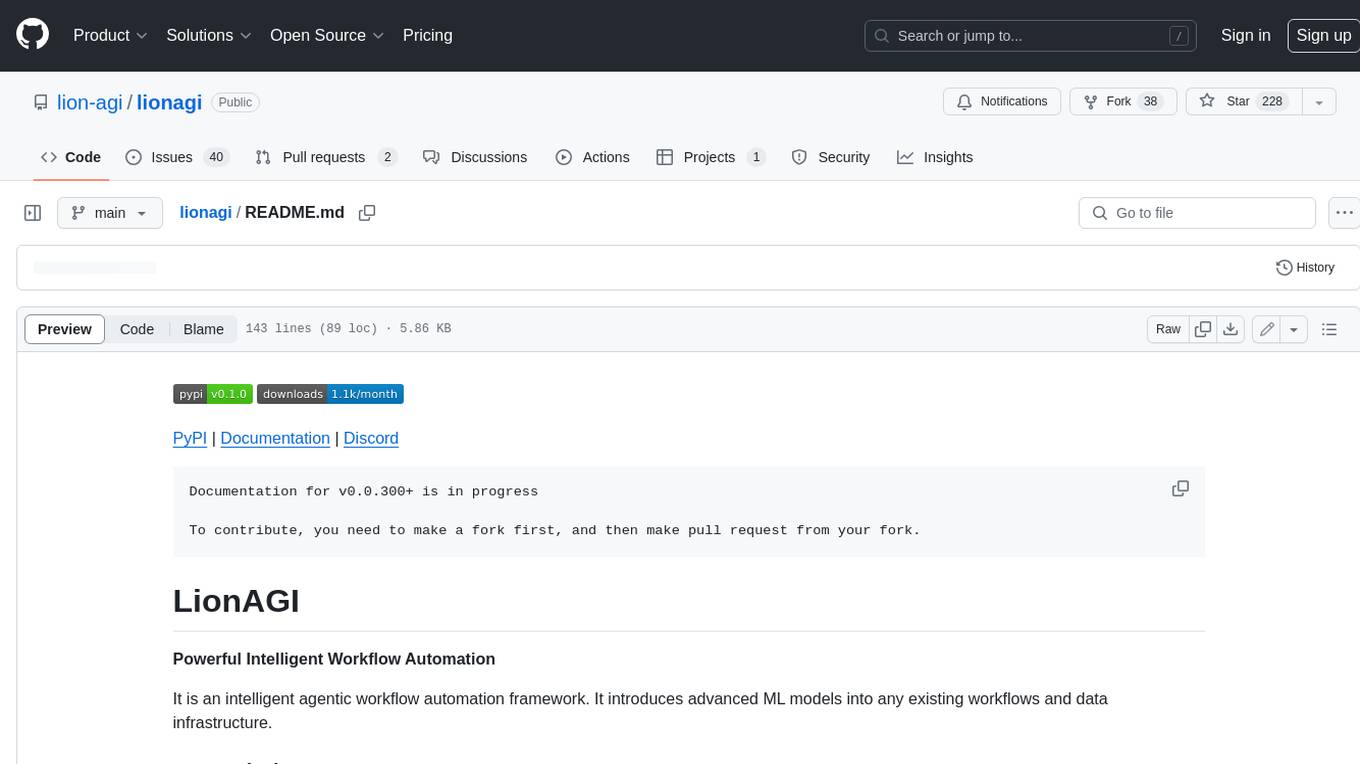
lionagi
LionAGI is a powerful intelligent workflow automation framework that introduces advanced ML models into any existing workflows and data infrastructure. It can interact with almost any model, run interactions in parallel for most models, produce structured pydantic outputs with flexible usage, automate workflow via graph based agents, use advanced prompting techniques, and more. LionAGI aims to provide a centralized agent-managed framework for "ML-powered tools coordination" and to dramatically lower the barrier of entries for creating use-case/domain specific tools. It is designed to be asynchronous only and requires Python 3.10 or higher.
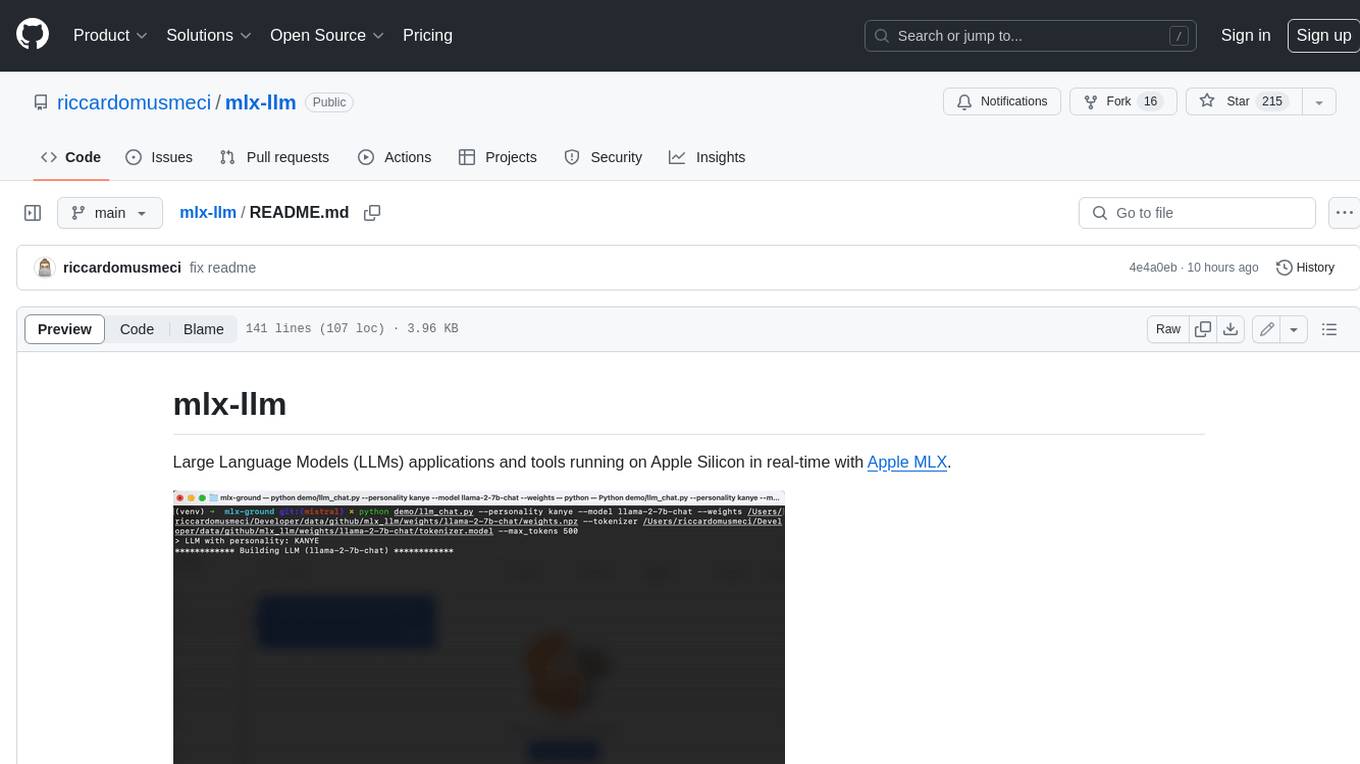
mlx-llm
mlx-llm is a library that allows you to run Large Language Models (LLMs) on Apple Silicon devices in real-time using Apple's MLX framework. It provides a simple and easy-to-use API for creating, loading, and using LLM models, as well as a variety of applications such as chatbots, fine-tuning, and retrieval-augmented generation.
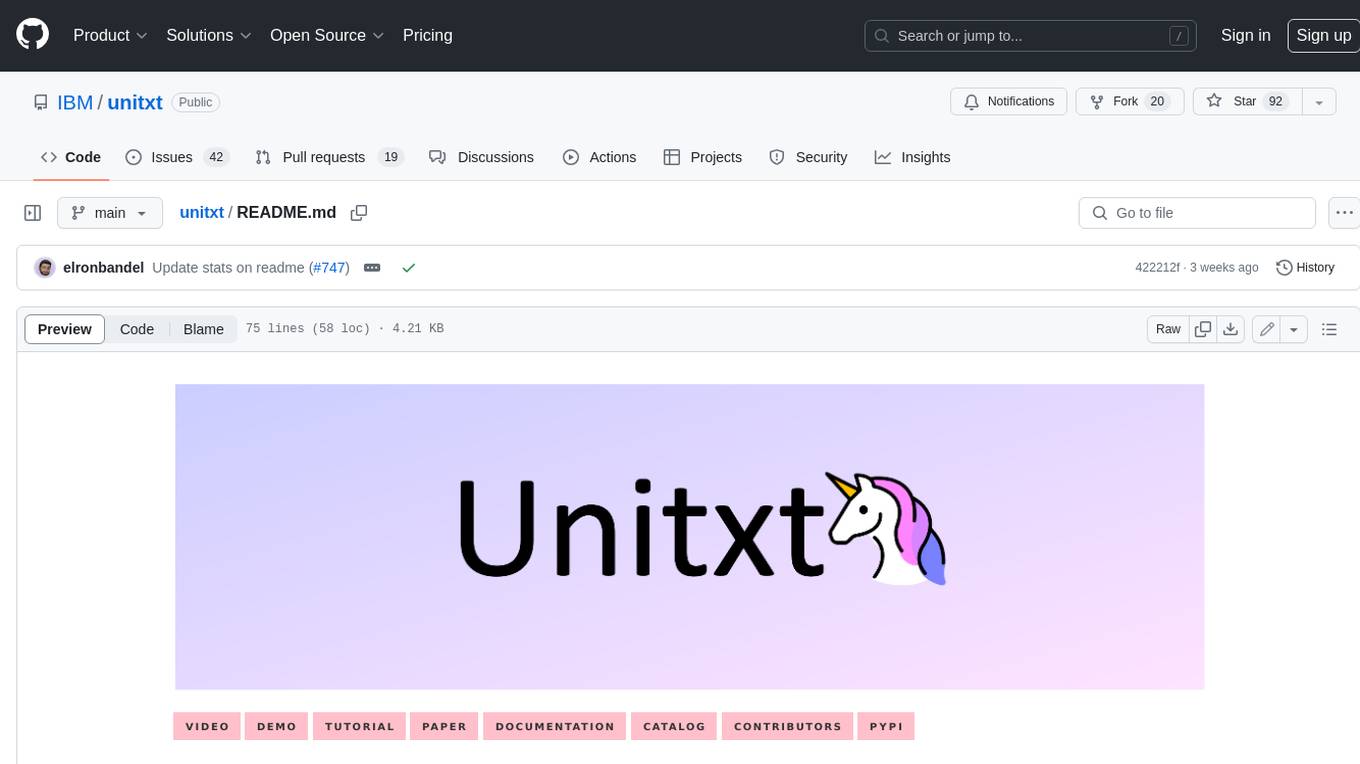
unitxt
Unitxt is a customizable library for textual data preparation and evaluation tailored to generative language models. It natively integrates with common libraries like HuggingFace and LM-eval-harness and deconstructs processing flows into modular components, enabling easy customization and sharing between practitioners. These components encompass model-specific formats, task prompts, and many other comprehensive dataset processing definitions. The Unitxt-Catalog centralizes these components, fostering collaboration and exploration in modern textual data workflows. Beyond being a tool, Unitxt is a community-driven platform, empowering users to build, share, and advance their pipelines collaboratively.
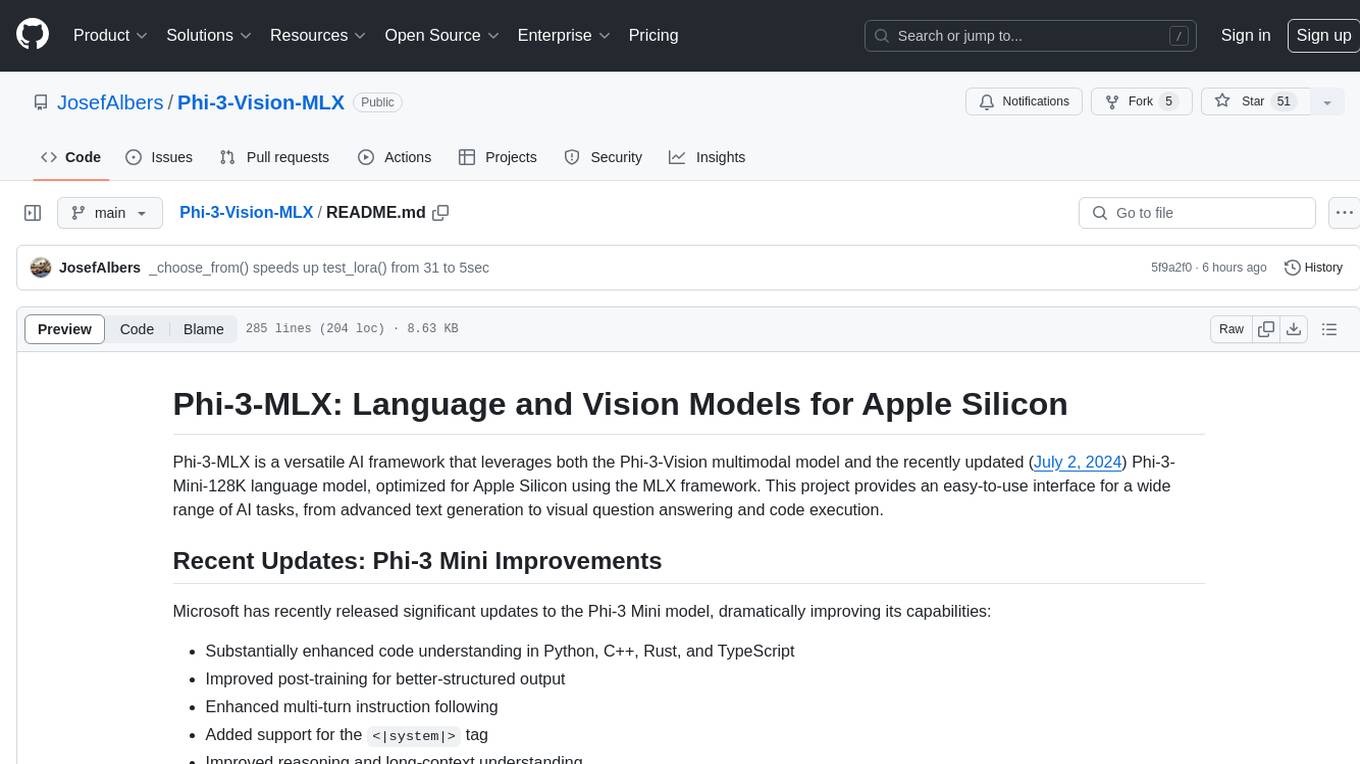
Phi-3-Vision-MLX
Phi-3-MLX is a versatile AI framework that leverages both the Phi-3-Vision multimodal model and the Phi-3-Mini-128K language model optimized for Apple Silicon using the MLX framework. It provides an easy-to-use interface for a wide range of AI tasks, from advanced text generation to visual question answering and code execution. The project features support for batched generation, flexible agent system, custom toolchains, model quantization, LoRA fine-tuning capabilities, and API integration for extended functionality.
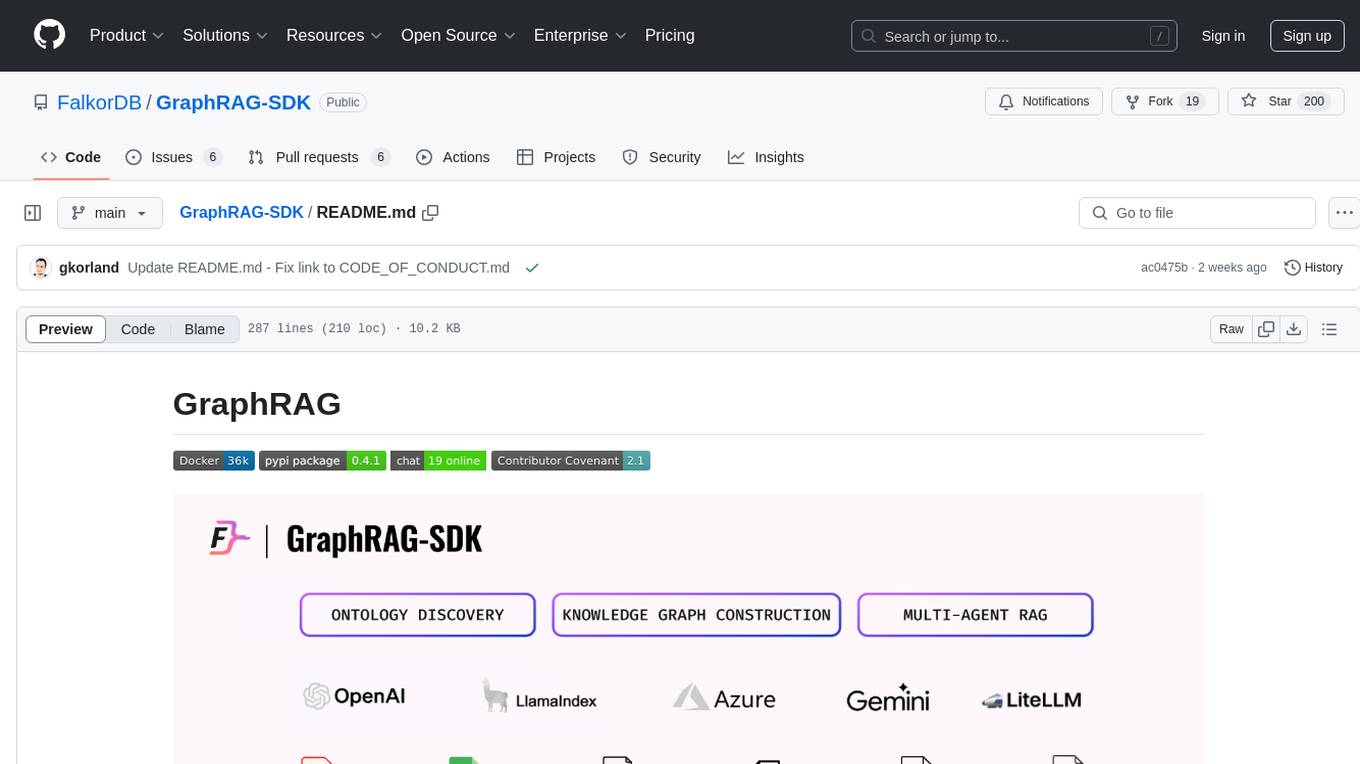
GraphRAG-SDK
Build fast and accurate GenAI applications with GraphRAG SDK, a specialized toolkit for building Graph Retrieval-Augmented Generation (GraphRAG) systems. It integrates knowledge graphs, ontology management, and state-of-the-art LLMs to deliver accurate, efficient, and customizable RAG workflows. The SDK simplifies the development process by automating ontology creation, knowledge graph agent creation, and query handling, enabling users to interact and query their knowledge graphs effectively. It supports multi-agent systems and orchestrates agents specialized in different domains. The SDK is optimized for FalkorDB, ensuring high performance and scalability for large-scale applications. By leveraging knowledge graphs, it enables semantic relationships and ontology-driven queries that go beyond standard vector similarity, enhancing retrieval-augmented generation capabilities.
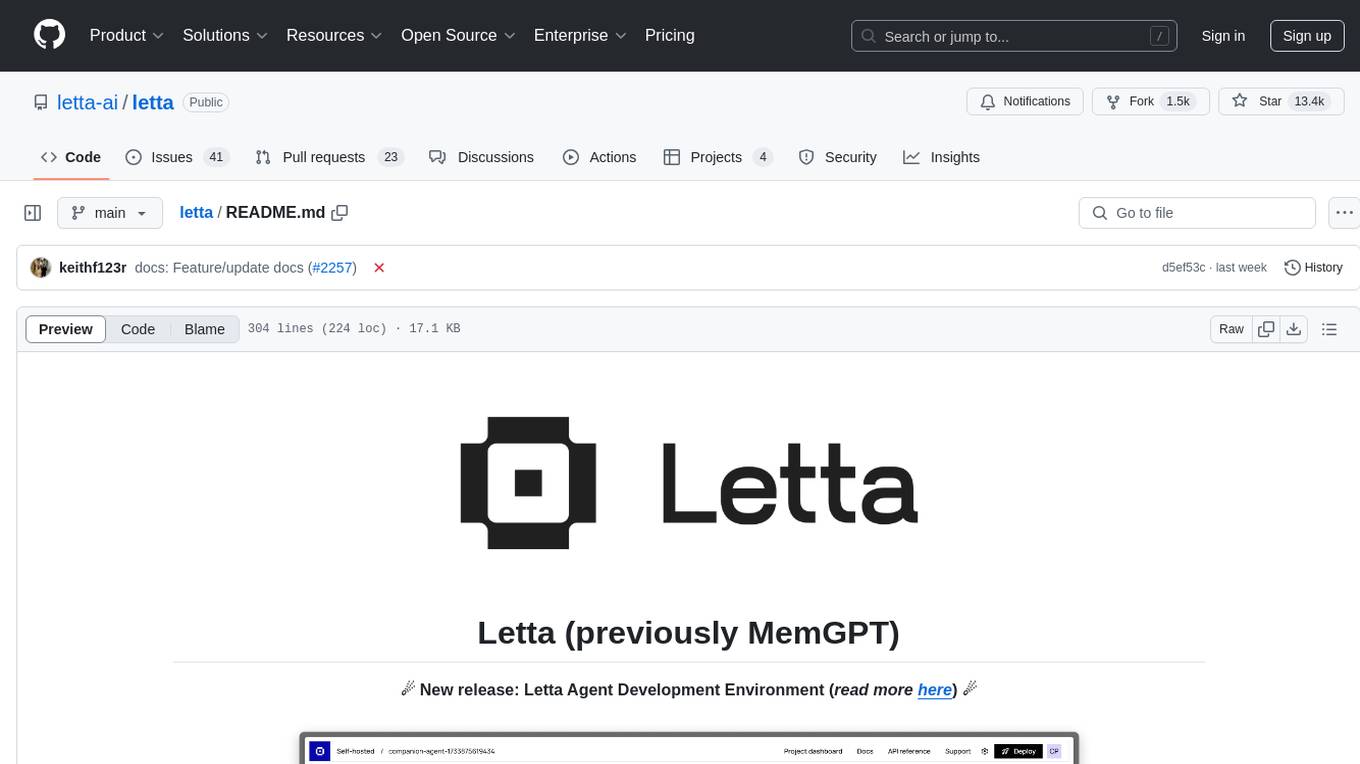
letta
Letta is an open source framework for building stateful LLM applications. It allows users to build stateful agents with advanced reasoning capabilities and transparent long-term memory. The framework is white box and model-agnostic, enabling users to connect to various LLM API backends. Letta provides a graphical interface, the Letta ADE, for creating, deploying, interacting, and observing with agents. Users can access Letta via REST API, Python, Typescript SDKs, and the ADE. Letta supports persistence by storing agent data in a database, with PostgreSQL recommended for data migrations. Users can install Letta using Docker or pip, with Docker defaulting to PostgreSQL and pip defaulting to SQLite. Letta also offers a CLI tool for interacting with agents. The project is open source and welcomes contributions from the community.
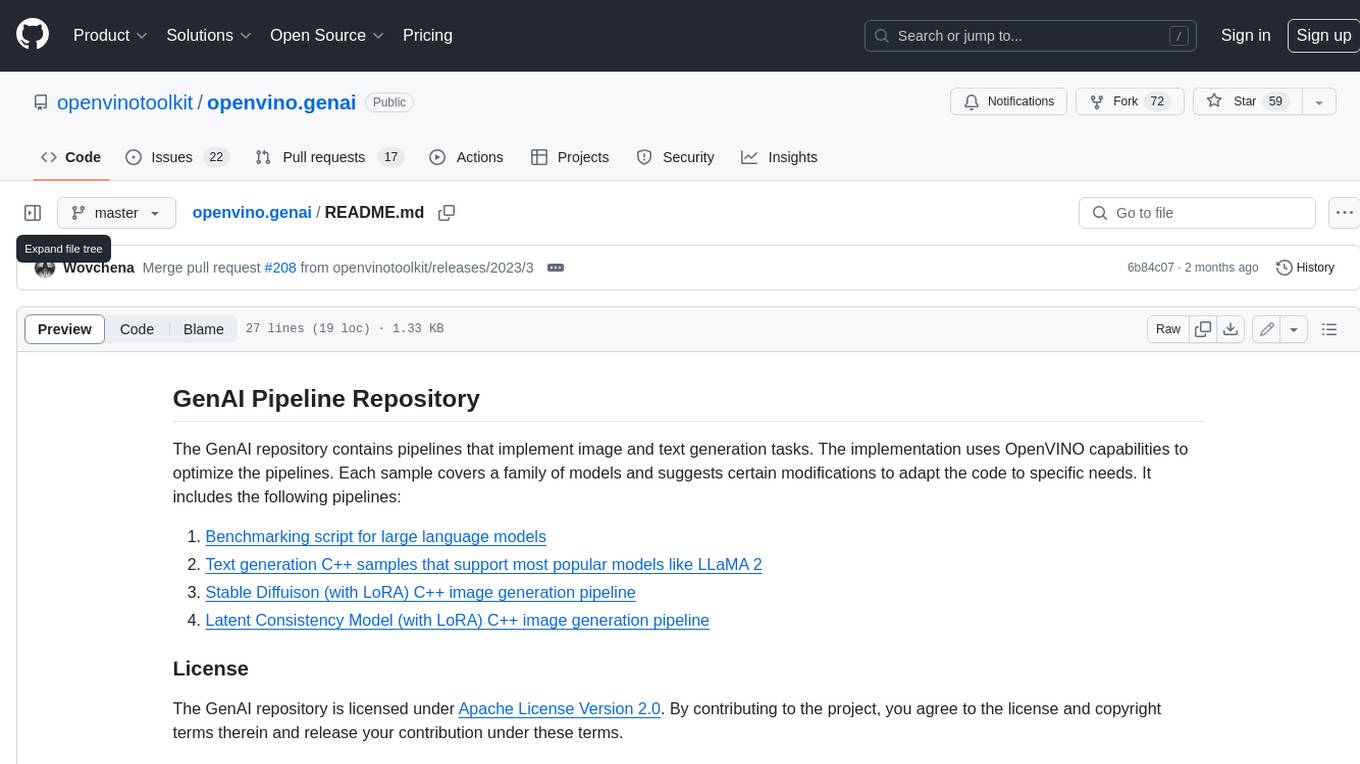
openvino.genai
The GenAI repository contains pipelines that implement image and text generation tasks. The implementation uses OpenVINO capabilities to optimize the pipelines. Each sample covers a family of models and suggests certain modifications to adapt the code to specific needs. It includes the following pipelines: 1. Benchmarking script for large language models 2. Text generation C++ samples that support most popular models like LLaMA 2 3. Stable Diffuison (with LoRA) C++ image generation pipeline 4. Latent Consistency Model (with LoRA) C++ image generation pipeline
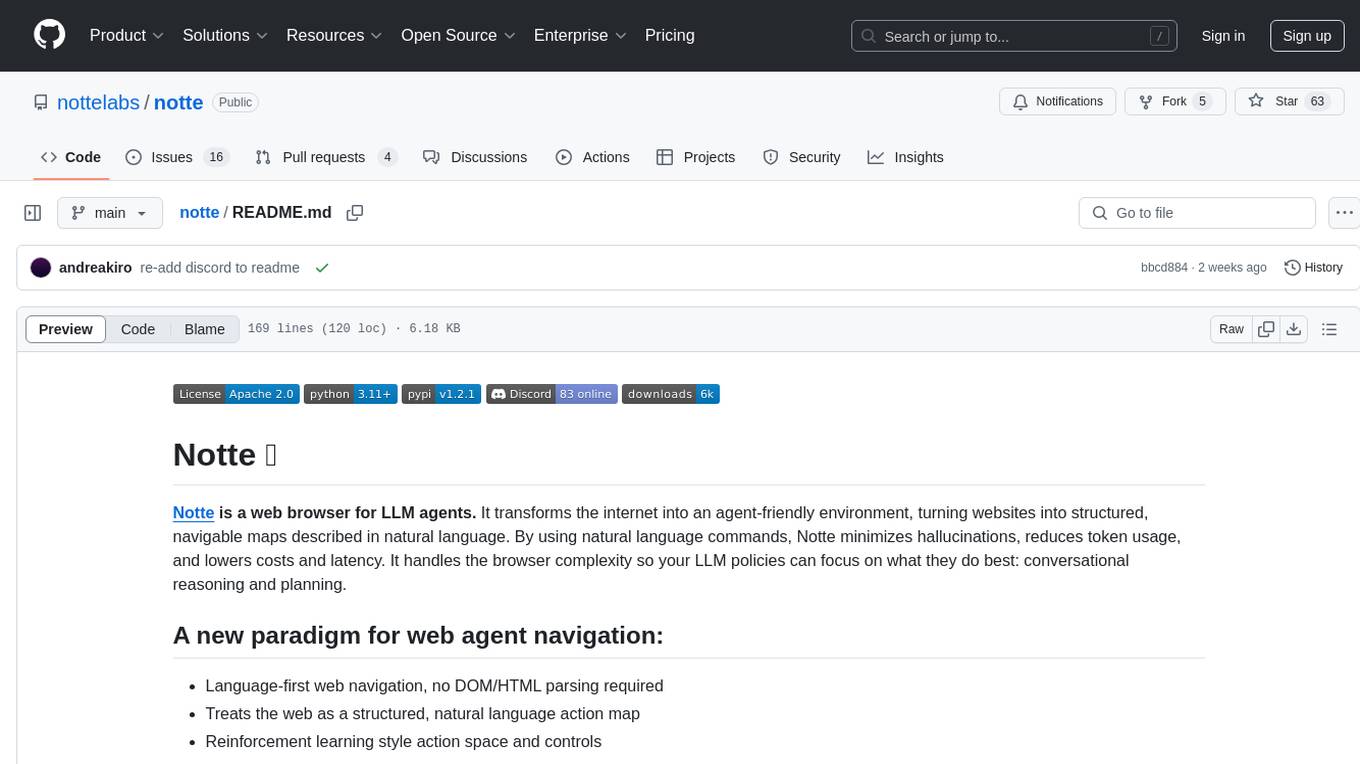
notte
Notte is a web browser designed specifically for LLM agents, providing a language-first web navigation experience without the need for DOM/HTML parsing. It transforms websites into structured, navigable maps described in natural language, enabling users to interact with the web using natural language commands. By simplifying browser complexity, Notte allows LLM policies to focus on conversational reasoning and planning, reducing token usage, costs, and latency. The tool supports various language model providers and offers a reinforcement learning style action space and controls for full navigation control.
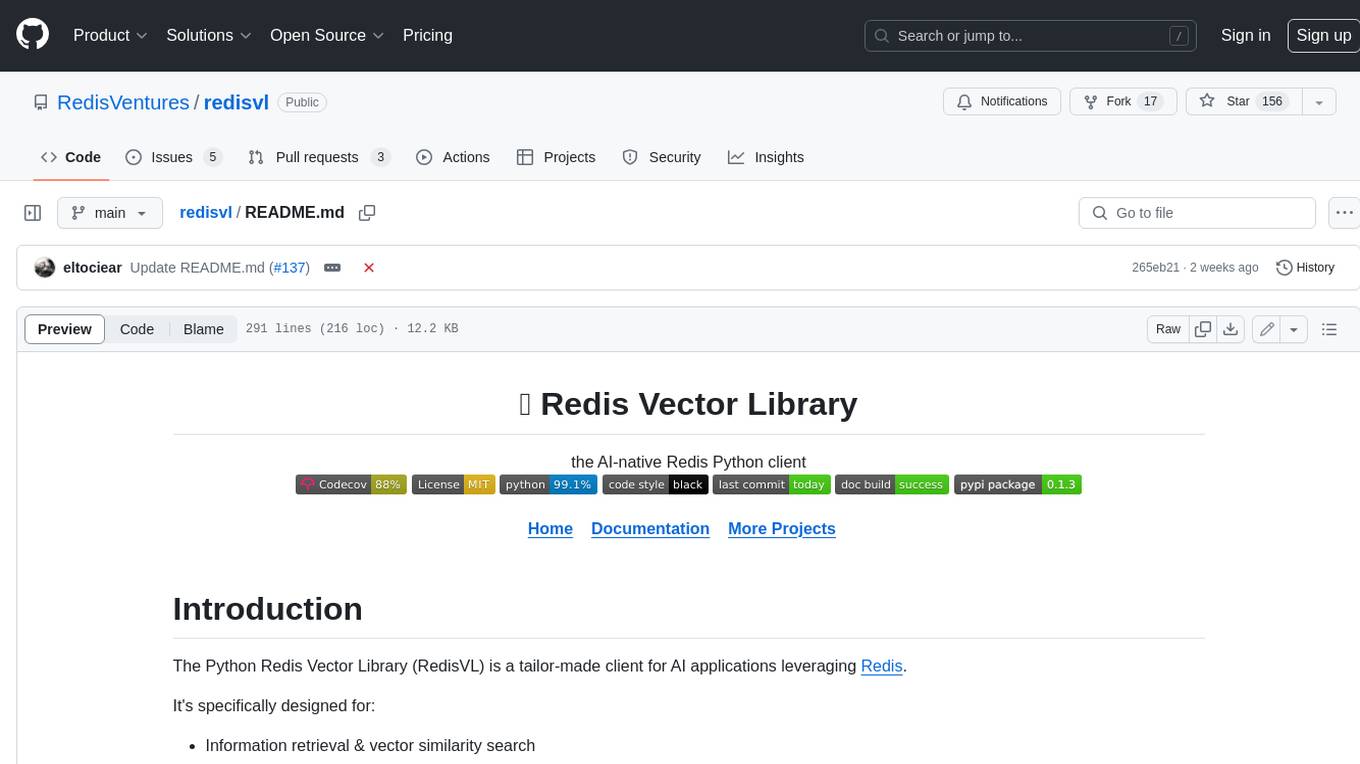
redisvl
Redis Vector Library (RedisVL) is a Python client library for building AI applications on top of Redis. It provides a high-level interface for managing vector indexes, performing vector search, and integrating with popular embedding models and providers. RedisVL is designed to make it easy for developers to build and deploy AI applications that leverage the speed, flexibility, and reliability of Redis.
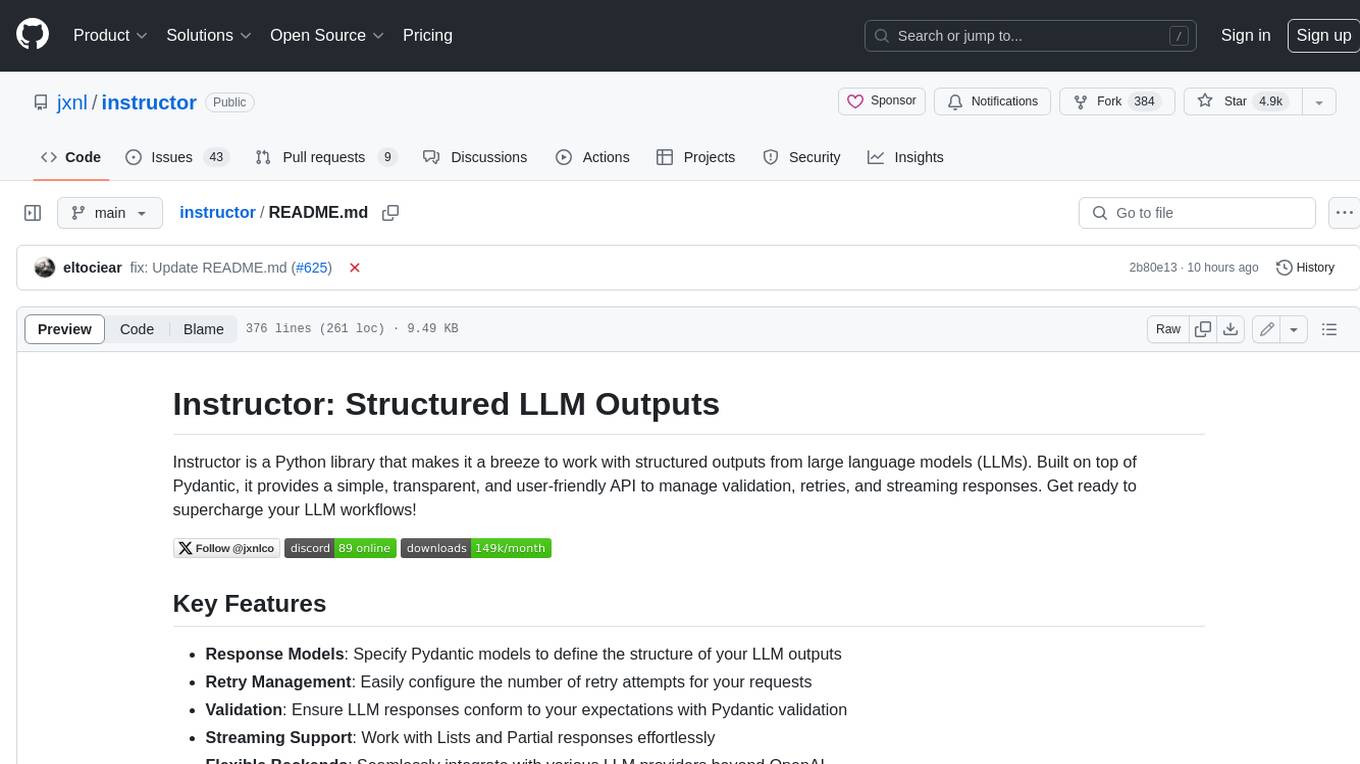
instructor
Instructor is a Python library that makes it a breeze to work with structured outputs from large language models (LLMs). Built on top of Pydantic, it provides a simple, transparent, and user-friendly API to manage validation, retries, and streaming responses. Get ready to supercharge your LLM workflows!
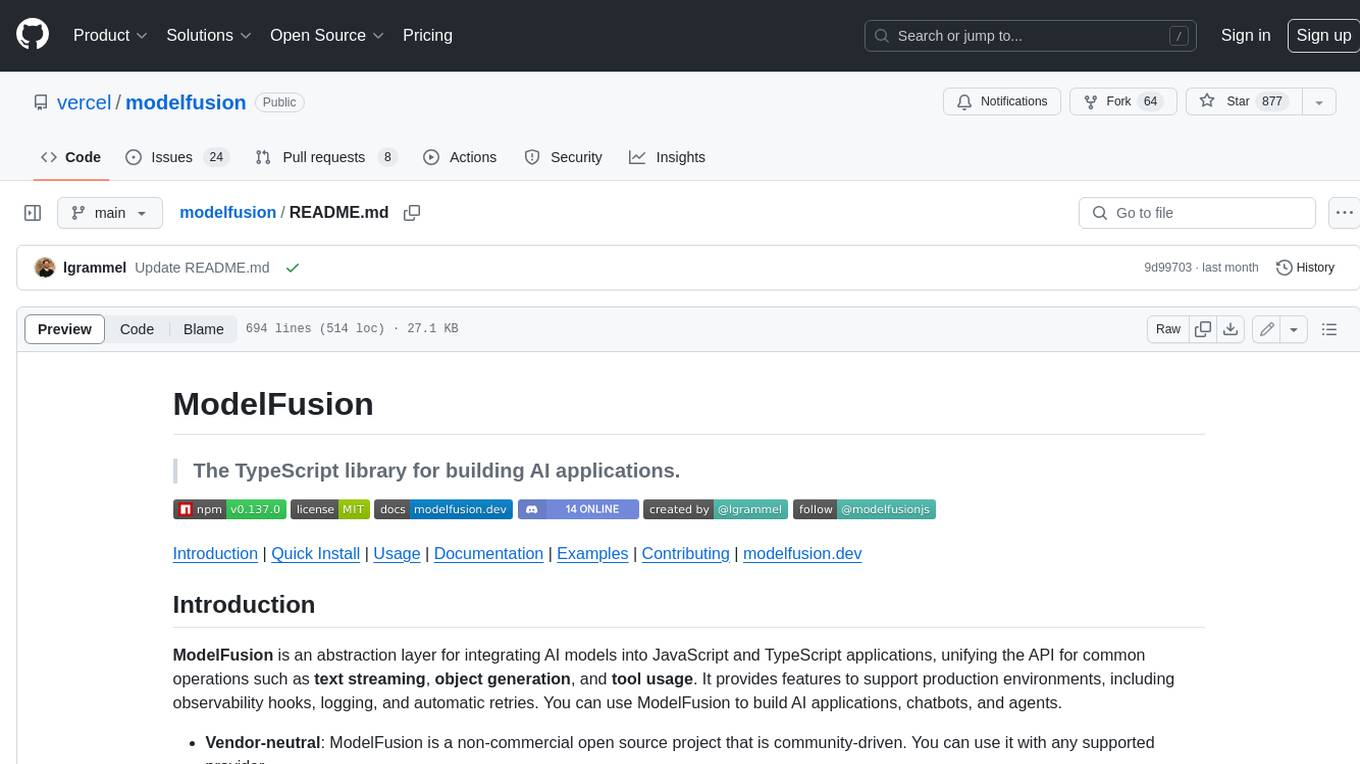
modelfusion
ModelFusion is an abstraction layer for integrating AI models into JavaScript and TypeScript applications, unifying the API for common operations such as text streaming, object generation, and tool usage. It provides features to support production environments, including observability hooks, logging, and automatic retries. You can use ModelFusion to build AI applications, chatbots, and agents. ModelFusion is a non-commercial open source project that is community-driven. You can use it with any supported provider. ModelFusion supports a wide range of models including text generation, image generation, vision, text-to-speech, speech-to-text, and embedding models. ModelFusion infers TypeScript types wherever possible and validates model responses. ModelFusion provides an observer framework and logging support. ModelFusion ensures seamless operation through automatic retries, throttling, and error handling mechanisms. ModelFusion is fully tree-shakeable, can be used in serverless environments, and only uses a minimal set of dependencies.
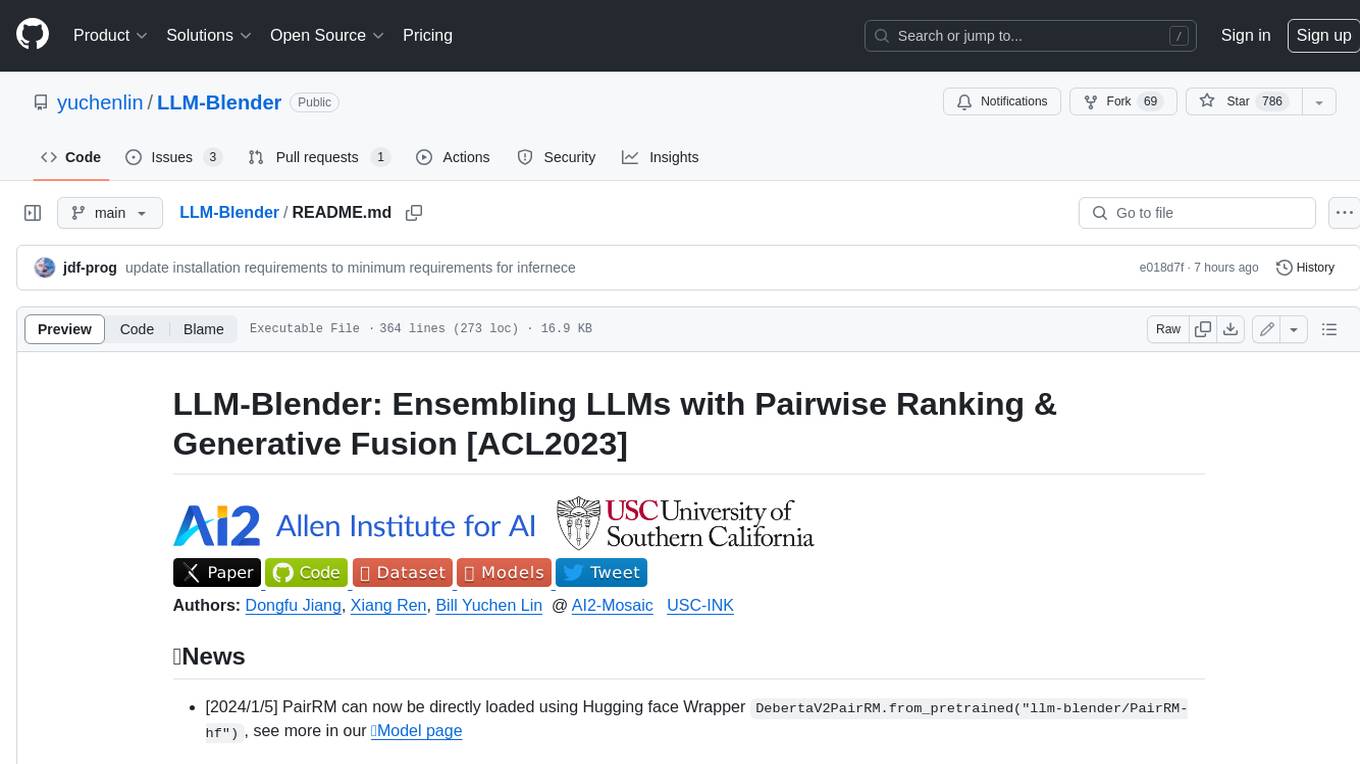
LLM-Blender
LLM-Blender is a framework for ensembling large language models (LLMs) to achieve superior performance. It consists of two modules: PairRanker and GenFuser. PairRanker uses pairwise comparisons to distinguish between candidate outputs, while GenFuser merges the top-ranked candidates to create an improved output. LLM-Blender has been shown to significantly surpass the best LLMs and baseline ensembling methods across various metrics on the MixInstruct benchmark dataset.
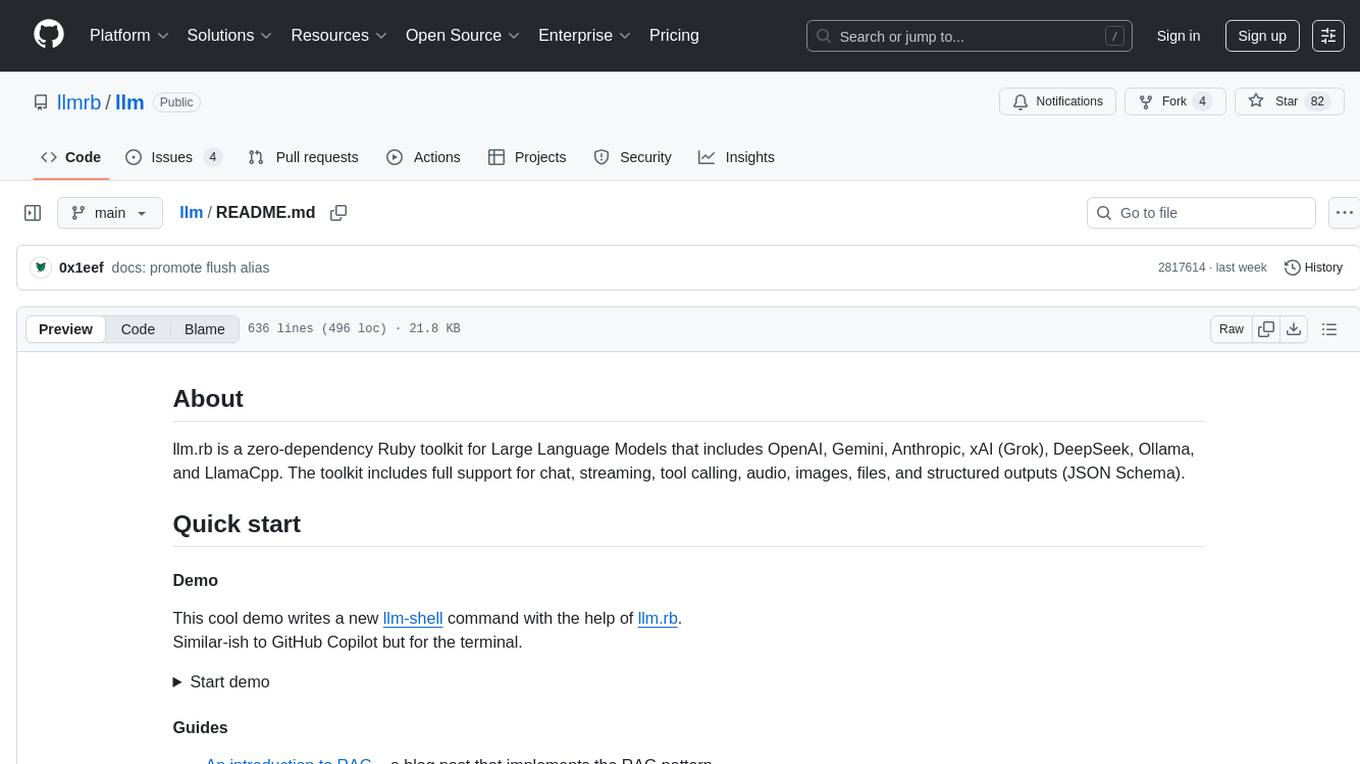
llm
llm.rb is a zero-dependency Ruby toolkit for Large Language Models that includes OpenAI, Gemini, Anthropic, xAI (Grok), DeepSeek, Ollama, and LlamaCpp. The toolkit provides full support for chat, streaming, tool calling, audio, images, files, and structured outputs (JSON Schema). It offers a single unified interface for multiple providers, zero dependencies outside Ruby's standard library, smart API design, and optional per-provider process-wide connection pool. Features include chat, agents, media support (text-to-speech, transcription, translation, image generation, editing), embeddings, model management, and more.
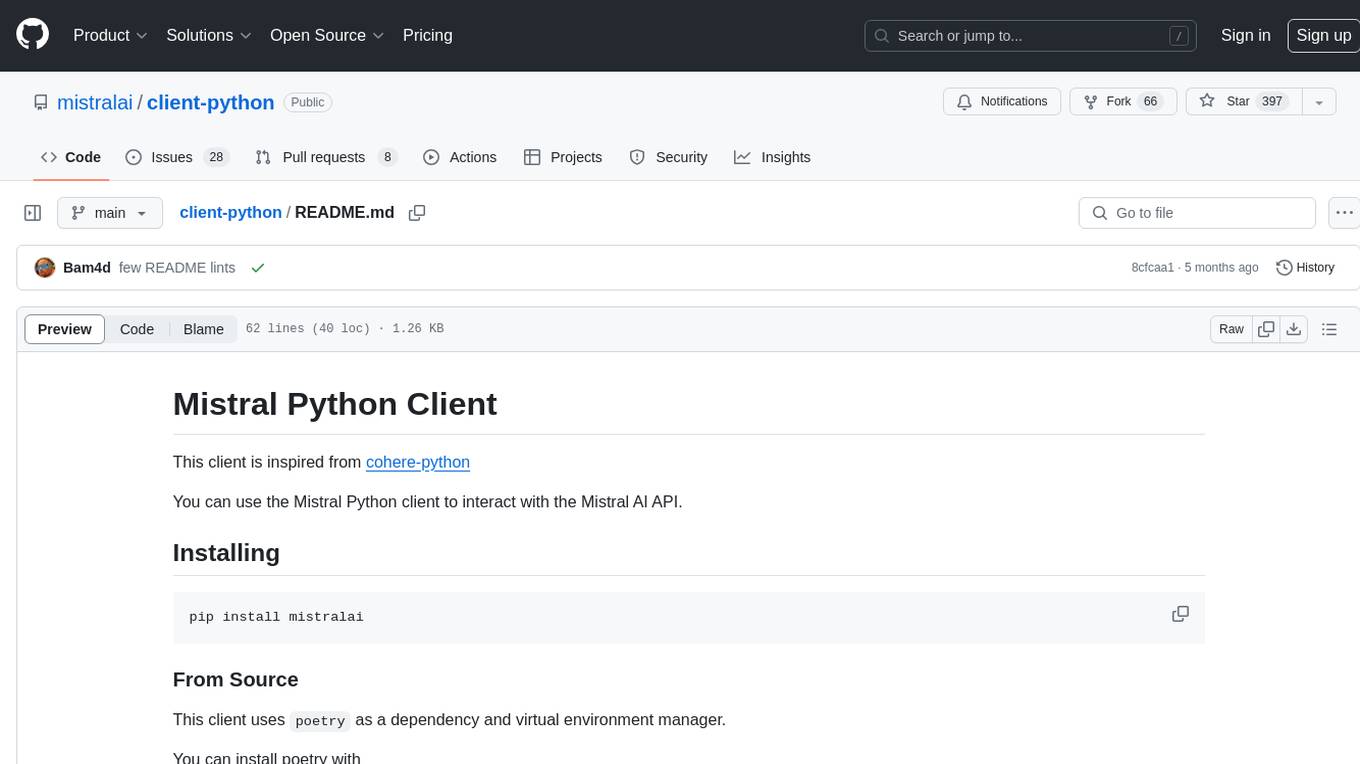
client-python
The Mistral Python Client is a tool inspired by cohere-python that allows users to interact with the Mistral AI API. It provides functionalities to access and utilize the AI capabilities offered by Mistral. Users can easily install the client using pip and manage dependencies using poetry. The client includes examples demonstrating how to use the API for various tasks, such as chat interactions. To get started, users need to obtain a Mistral API Key and set it as an environment variable. Overall, the Mistral Python Client simplifies the integration of Mistral AI services into Python applications.
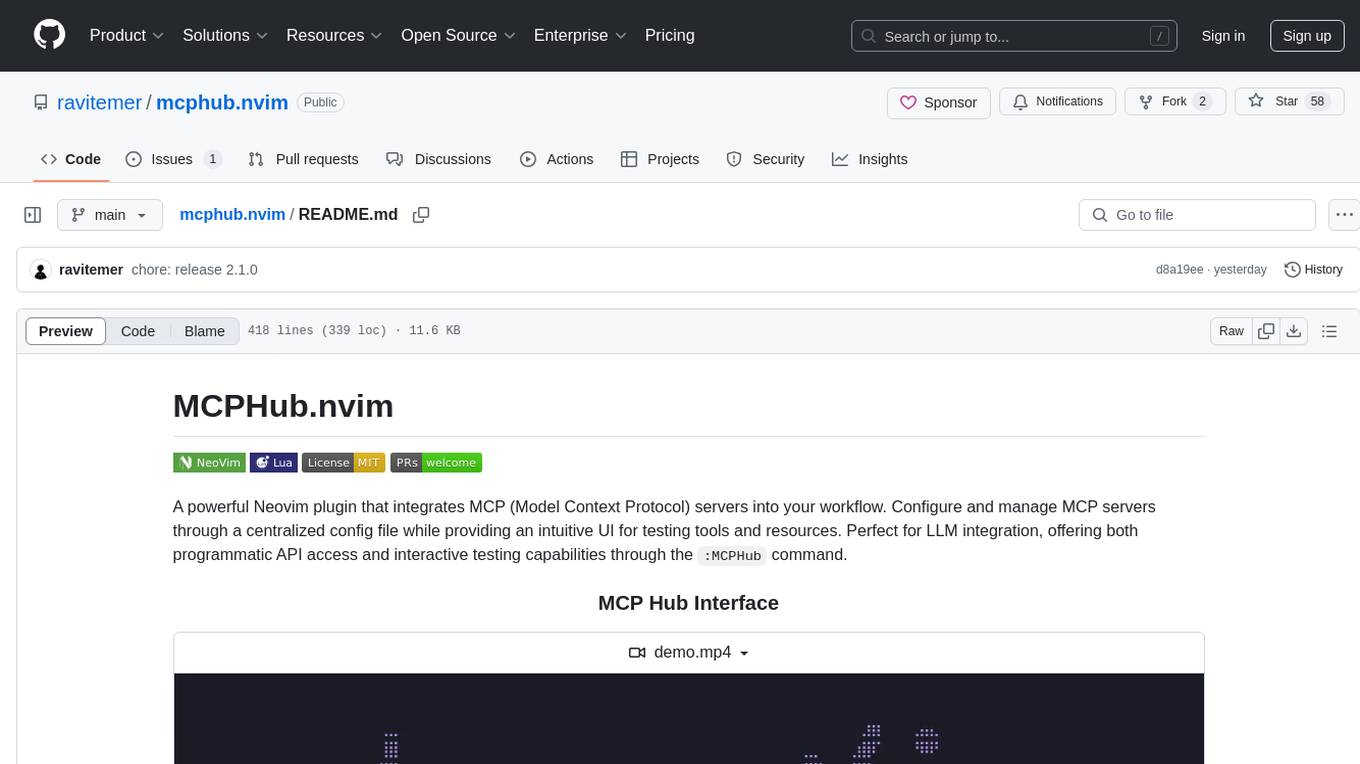
mcphub.nvim
MCPHub.nvim is a powerful Neovim plugin that integrates MCP (Model Context Protocol) servers into your workflow. It offers a centralized config file for managing servers and tools, with an intuitive UI for testing resources. Ideal for LLM integration, it provides programmatic API access and interactive testing through the `:MCPHub` command.
For similar tasks
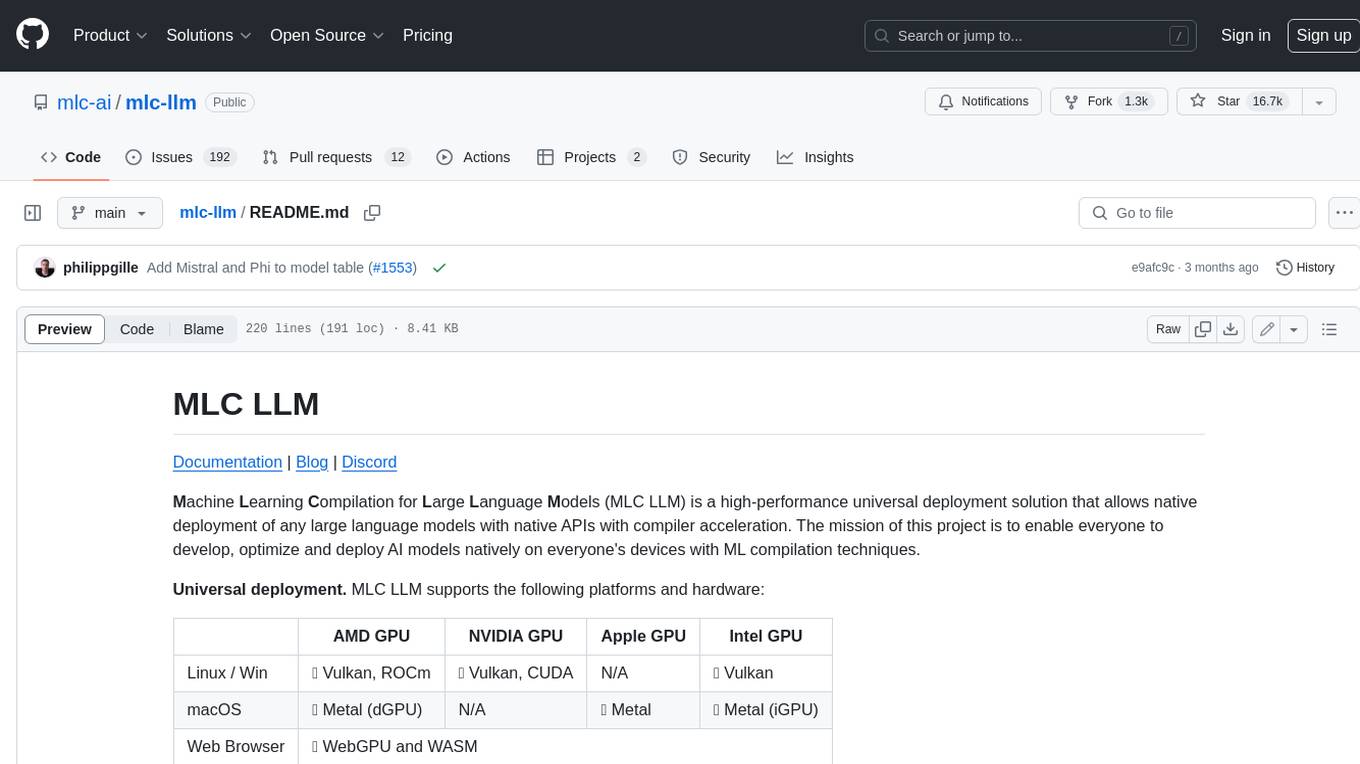
mlc-llm
MLC LLM is a high-performance universal deployment solution that allows native deployment of any large language models with native APIs with compiler acceleration. It supports a wide range of model architectures and variants, including Llama, GPT-NeoX, GPT-J, RWKV, MiniGPT, GPTBigCode, ChatGLM, StableLM, Mistral, and Phi. MLC LLM provides multiple sets of APIs across platforms and environments, including Python API, OpenAI-compatible Rest-API, C++ API, JavaScript API and Web LLM, Swift API for iOS App, and Java API and Android App.
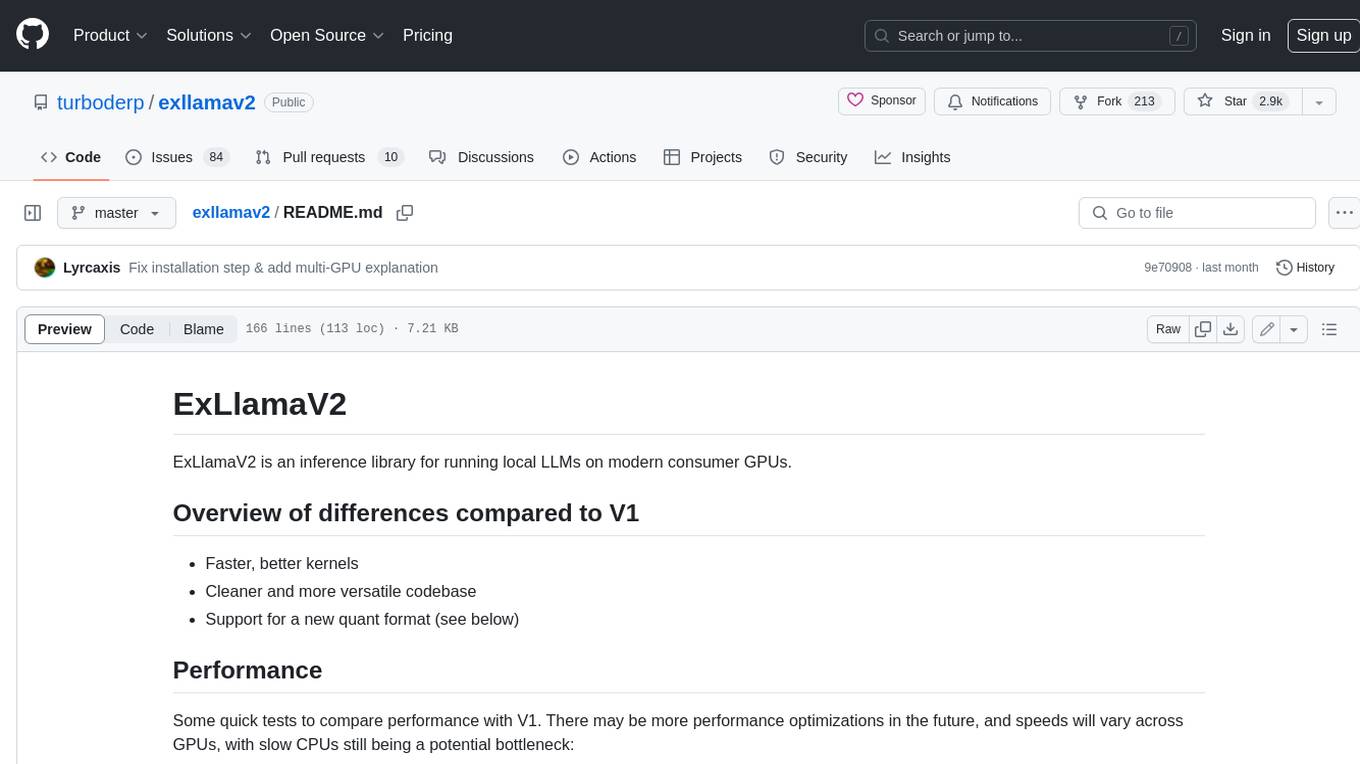
exllamav2
ExLlamaV2 is an inference library for running local LLMs on modern consumer GPUs. It is a faster, better, and more versatile codebase than its predecessor, ExLlamaV1, with support for a new quant format called EXL2. EXL2 is based on the same optimization method as GPTQ and supports 2, 3, 4, 5, 6, and 8-bit quantization. It allows for mixing quantization levels within a model to achieve any average bitrate between 2 and 8 bits per weight. ExLlamaV2 can be installed from source, from a release with prebuilt extension, or from PyPI. It supports integration with TabbyAPI, ExUI, text-generation-webui, and lollms-webui. Key features of ExLlamaV2 include: - Faster and better kernels - Cleaner and more versatile codebase - Support for EXL2 quantization format - Integration with various web UIs and APIs - Community support on Discord
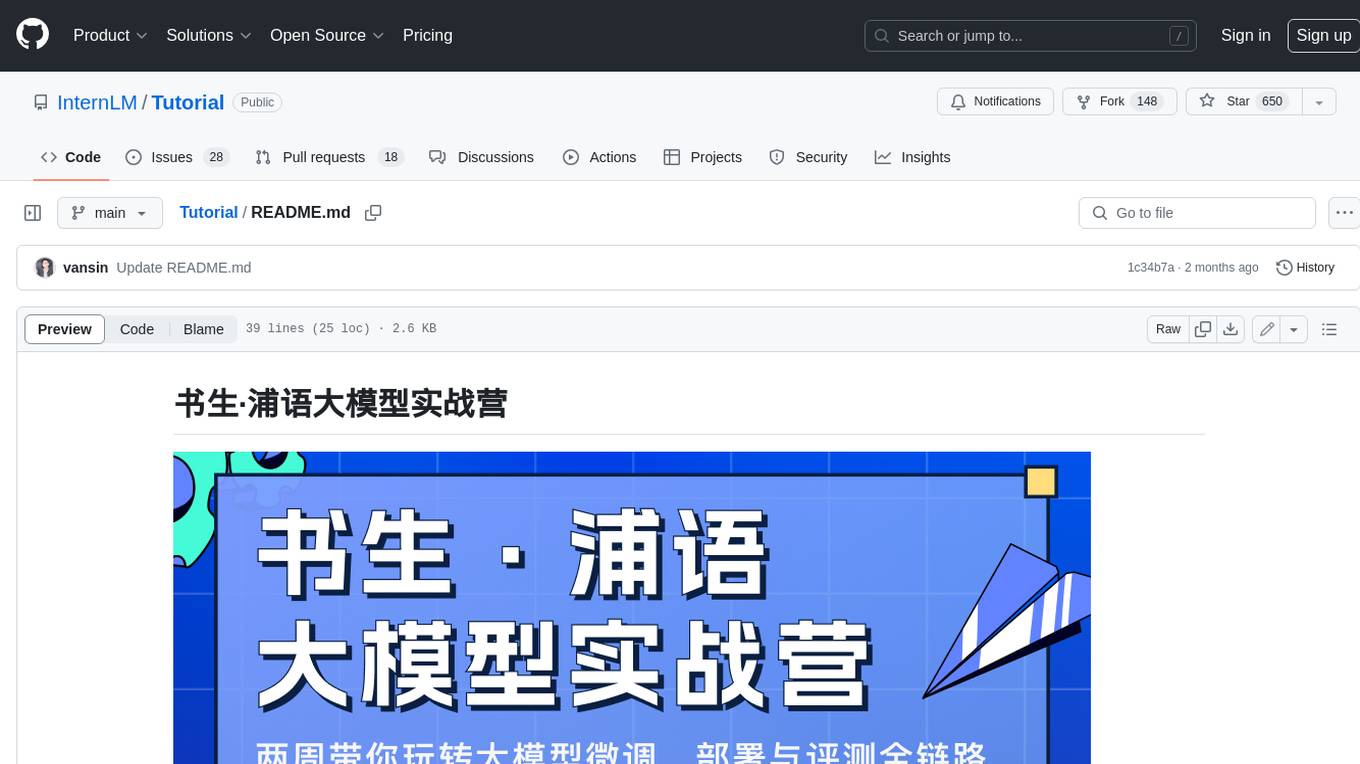
Tutorial
The Bookworm·Puyu large model training camp aims to promote the implementation of large models in more industries and provide developers with a more efficient platform for learning the development and application of large models. Within two weeks, you will learn the entire process of fine-tuning, deploying, and evaluating large models.
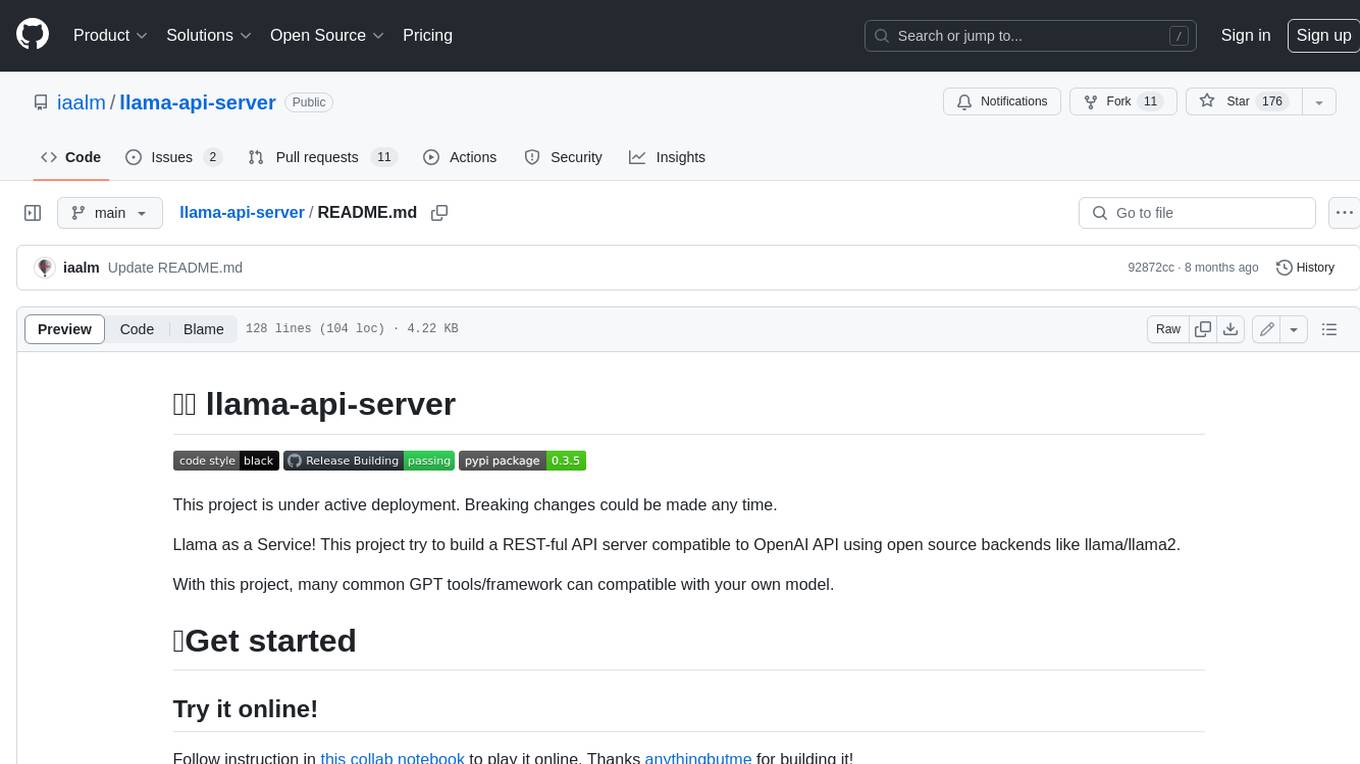
llama-api-server
This project aims to create a RESTful API server compatible with the OpenAI API using open-source backends like llama/llama2. With this project, various GPT tools/frameworks can be compatible with your own model. Key features include: - **Compatibility with OpenAI API**: The API server follows the OpenAI API structure, allowing seamless integration with existing tools and frameworks. - **Support for Multiple Backends**: The server supports both llama.cpp and pyllama backends, providing flexibility in model selection. - **Customization Options**: Users can configure model parameters such as temperature, top_p, and top_k to fine-tune the model's behavior. - **Batch Processing**: The API supports batch processing for embeddings, enabling efficient handling of multiple inputs. - **Token Authentication**: The server utilizes token authentication to secure access to the API. This tool is particularly useful for developers and researchers who want to integrate large language models into their applications or explore custom models without relying on proprietary APIs.
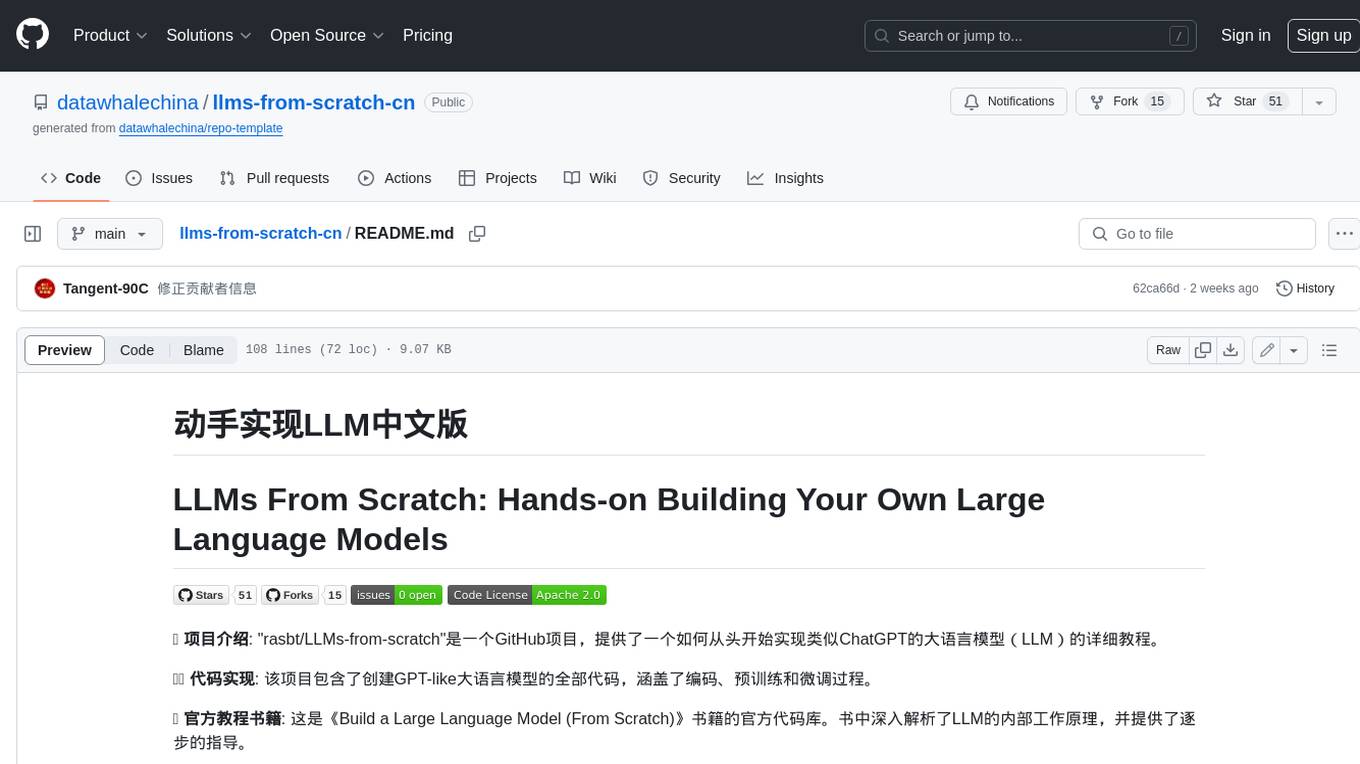
llms-from-scratch-cn
This repository provides a detailed tutorial on how to build your own large language model (LLM) from scratch. It includes all the code necessary to create a GPT-like LLM, covering the encoding, pre-training, and fine-tuning processes. The tutorial is written in a clear and concise style, with plenty of examples and illustrations to help you understand the concepts involved. It is suitable for developers and researchers with some programming experience who are interested in learning more about LLMs and how to build them.
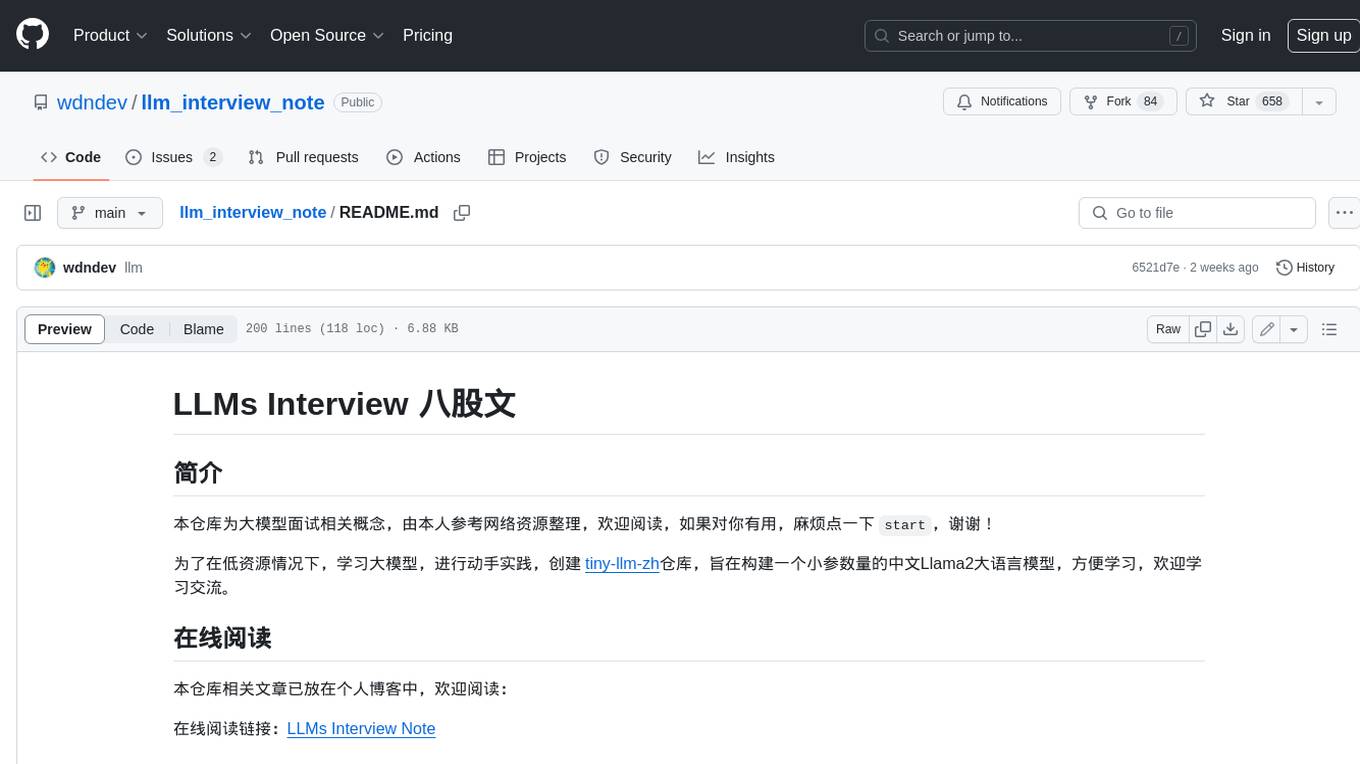
llm_interview_note
This repository provides a comprehensive overview of large language models (LLMs), covering various aspects such as their history, types, underlying architecture, training techniques, and applications. It includes detailed explanations of key concepts like Transformer models, distributed training, fine-tuning, and reinforcement learning. The repository also discusses the evaluation and limitations of LLMs, including the phenomenon of hallucinations. Additionally, it provides a list of related courses and references for further exploration.
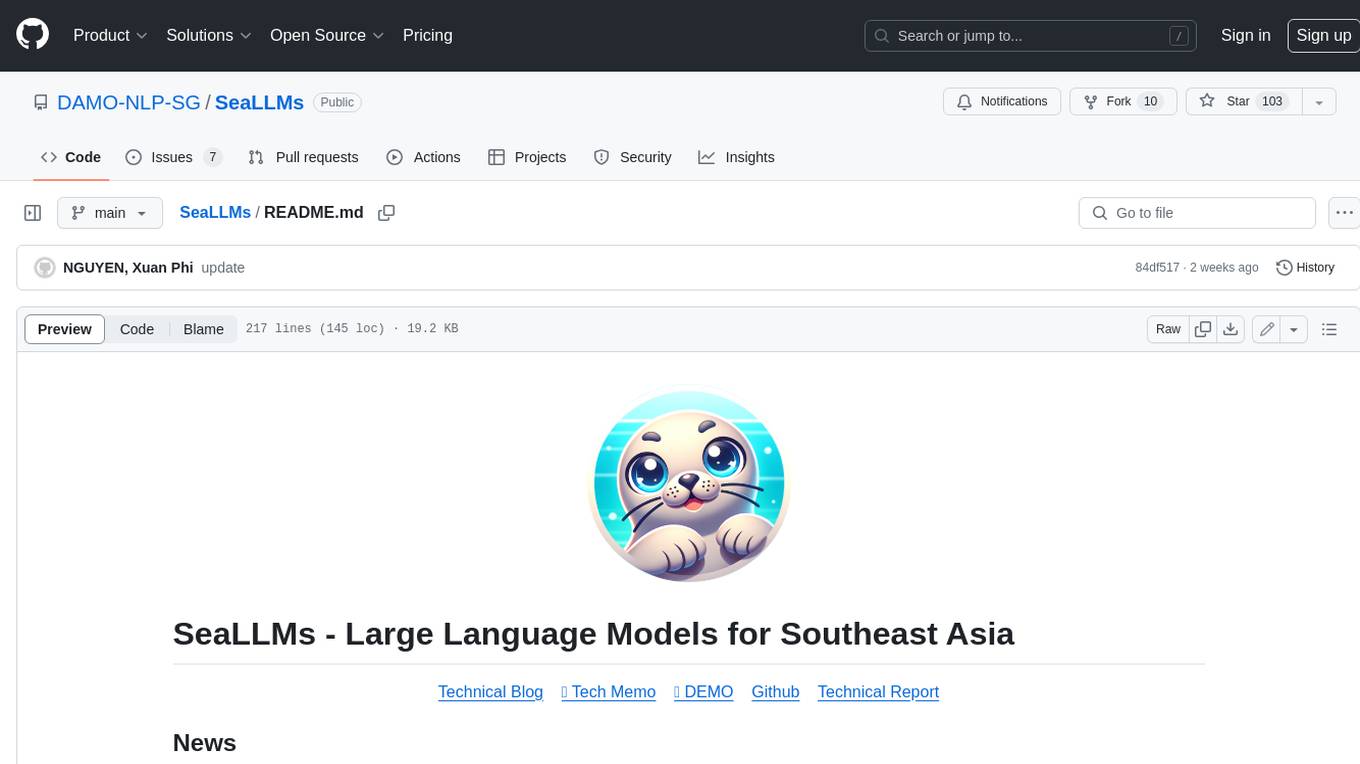
SeaLLMs
SeaLLMs are a family of language models optimized for Southeast Asian (SEA) languages. They were pre-trained from Llama-2, on a tailored publicly-available dataset, which comprises texts in Vietnamese 🇻🇳, Indonesian 🇮🇩, Thai 🇹🇭, Malay 🇲🇾, Khmer🇰🇭, Lao🇱🇦, Tagalog🇵🇭 and Burmese🇲🇲. The SeaLLM-chat underwent supervised finetuning (SFT) and specialized self-preferencing DPO using a mix of public instruction data and a small number of queries used by SEA language native speakers in natural settings, which **adapt to the local cultural norms, customs, styles and laws in these areas**. SeaLLM-13b models exhibit superior performance across a wide spectrum of linguistic tasks and assistant-style instruction-following capabilities relative to comparable open-source models. Moreover, they outperform **ChatGPT-3.5** in non-Latin languages, such as Thai, Khmer, Lao, and Burmese.

PhoGPT
PhoGPT is an open-source 4B-parameter generative model series for Vietnamese, including the base pre-trained monolingual model PhoGPT-4B and its chat variant, PhoGPT-4B-Chat. PhoGPT-4B is pre-trained from scratch on a Vietnamese corpus of 102B tokens, with an 8192 context length and a vocabulary of 20K token types. PhoGPT-4B-Chat is fine-tuned on instructional prompts and conversations, demonstrating superior performance. Users can run the model with inference engines like vLLM and Text Generation Inference, and fine-tune it using llm-foundry. However, PhoGPT has limitations in reasoning, coding, and mathematics tasks, and may generate harmful or biased responses.
For similar jobs

weave
Weave is a toolkit for developing Generative AI applications, built by Weights & Biases. With Weave, you can log and debug language model inputs, outputs, and traces; build rigorous, apples-to-apples evaluations for language model use cases; and organize all the information generated across the LLM workflow, from experimentation to evaluations to production. Weave aims to bring rigor, best-practices, and composability to the inherently experimental process of developing Generative AI software, without introducing cognitive overhead.

agentcloud
AgentCloud is an open-source platform that enables companies to build and deploy private LLM chat apps, empowering teams to securely interact with their data. It comprises three main components: Agent Backend, Webapp, and Vector Proxy. To run this project locally, clone the repository, install Docker, and start the services. The project is licensed under the GNU Affero General Public License, version 3 only. Contributions and feedback are welcome from the community.

oss-fuzz-gen
This framework generates fuzz targets for real-world `C`/`C++` projects with various Large Language Models (LLM) and benchmarks them via the `OSS-Fuzz` platform. It manages to successfully leverage LLMs to generate valid fuzz targets (which generate non-zero coverage increase) for 160 C/C++ projects. The maximum line coverage increase is 29% from the existing human-written targets.

LLMStack
LLMStack is a no-code platform for building generative AI agents, workflows, and chatbots. It allows users to connect their own data, internal tools, and GPT-powered models without any coding experience. LLMStack can be deployed to the cloud or on-premise and can be accessed via HTTP API or triggered from Slack or Discord.

VisionCraft
The VisionCraft API is a free API for using over 100 different AI models. From images to sound.

kaito
Kaito is an operator that automates the AI/ML inference model deployment in a Kubernetes cluster. It manages large model files using container images, avoids tuning deployment parameters to fit GPU hardware by providing preset configurations, auto-provisions GPU nodes based on model requirements, and hosts large model images in the public Microsoft Container Registry (MCR) if the license allows. Using Kaito, the workflow of onboarding large AI inference models in Kubernetes is largely simplified.

PyRIT
PyRIT is an open access automation framework designed to empower security professionals and ML engineers to red team foundation models and their applications. It automates AI Red Teaming tasks to allow operators to focus on more complicated and time-consuming tasks and can also identify security harms such as misuse (e.g., malware generation, jailbreaking), and privacy harms (e.g., identity theft). The goal is to allow researchers to have a baseline of how well their model and entire inference pipeline is doing against different harm categories and to be able to compare that baseline to future iterations of their model. This allows them to have empirical data on how well their model is doing today, and detect any degradation of performance based on future improvements.

Azure-Analytics-and-AI-Engagement
The Azure-Analytics-and-AI-Engagement repository provides packaged Industry Scenario DREAM Demos with ARM templates (Containing a demo web application, Power BI reports, Synapse resources, AML Notebooks etc.) that can be deployed in a customer’s subscription using the CAPE tool within a matter of few hours. Partners can also deploy DREAM Demos in their own subscriptions using DPoC.